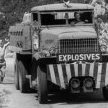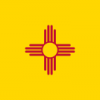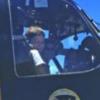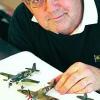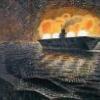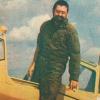

Dana Bell
-
Posts
382 -
Joined
-
Last visited
Dana Bell's Achievements

Established Member (3/9)
1.2k
Reputation
Single Status Update
-
Some 45 years ago I have seen the copy of "Scale Modeler" featuring the model of PBY-5 in so-called Asiatic fleet scheme invented by Admiral Hart men in Philippines. The owner of this copy - a long time friend of mine - died of heart attack few years ago and his widow destroyed (or simply thrown out) all his tremendous library...
Generally the aircraft followed the scheme well known from b&w pictures of PatWing 10 PBY-4s (and interpreted as 3 shades of blue-gray topsides plus a light grey bottom by Academy in their 1/72 PBY-4 kit), but if nobody knows for sure what the three topsides colors really were here one color seemed to be fixed - the Blue Gray as the PatWing 10 PBY-5s fighting over the Philippines and NEI in January 1942 were ex-VP-22 aircraft pictured a month before in Hawaii featuring then-standard M-485 over M-495 camouflage.
Do you mean that there was enough time and paint to apply the (otherwise standard for the PatWing 10) "Philippines camo" on the VP-22 aircraft recently acquired? Have you ever seen the early '70s Scale Modeler article mentioned above? Or maybe there are some photos confirming the scheme featured by the model depicted there?
Thank you in advance
-

Thanks for your question - you've touched on a subject that has interested me for many years - I'll give you my opinion, since I don't have proof either way...
First note is just a general note about M-485 and M-495 -- for many years modelers have thought those specs represented specific colors, which they didn't. M-485 was just a spec for camouflage lacquer, regardless of color; M-495 was the spec for camouflage dope. So Blue Gray lacquer applied to metal surfaces was M-485, while Blue Gray dope applied to fabric surfaces was M-495. The same was true of Light Gray lacquer and dope, and the insignia color lacquers and dope, black lacquers and dope, and so on. I mention this just to make sure we're talking the same language about these colors.
The earliest record I've seen of PatWing 10's Catalina camouflage was a reconnaissance photo dated 26 May 1941; all six PBYs in the photo were camouflaged in a disruptive pattern. PatWing 10 was in the Asiatic Fleet, whose ideas about camouflage were independent of the Pacific Fleet's (or Battles Force's) ideas. I believe that PatWing 10 might have used a version of a 1935 camouflage cited on page 31 of Jack Elliott's Monogram Guide Volume 1 - Dark Green-Yellow, Medium Blue-Green, and Light Purple-Blue. I've no proof, but those colors made sense for the murky Philippine waters, and that's what I think I'm seeing in the pix.
One last thing - you asked, "Do you mean..." but I'm afraid I don't have the memory I once had. (A bit too much time without oxygen a few years ago.) I'm not sure what I said, or when I said it, but I apologize for any confusion.
Cheers,
Dana
-

